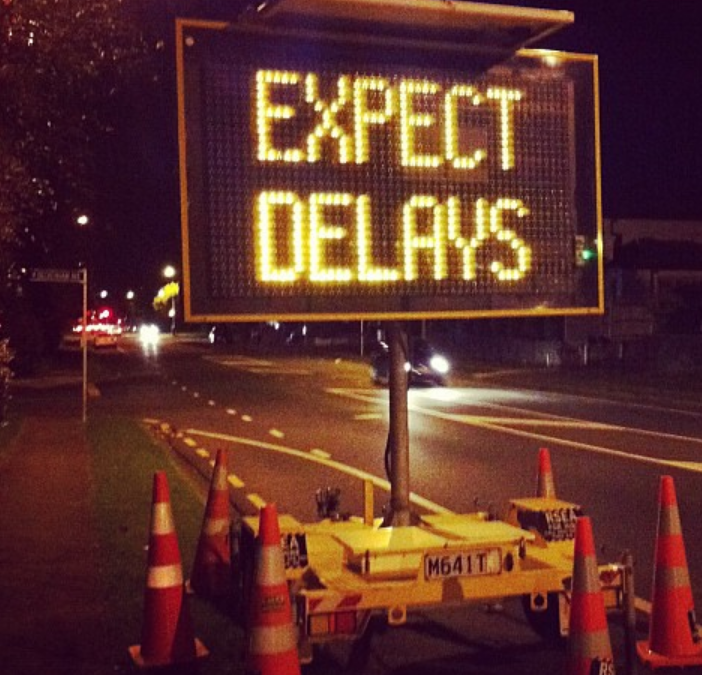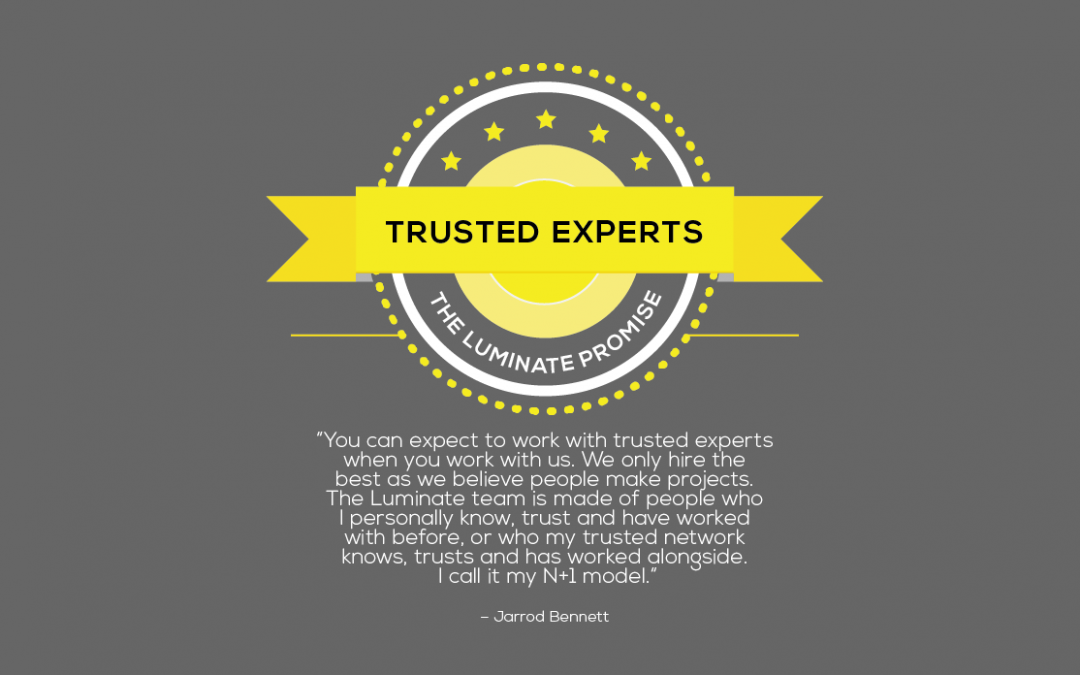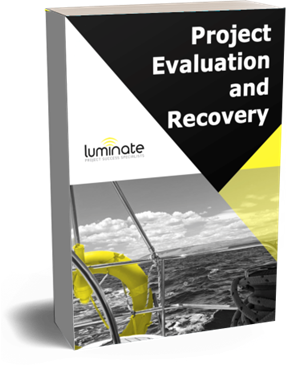
Jun 11, 2021
Hidden issues will rot a project from within. Lying just below the surface, a hidden issue can’t be magicked away. Instead it sits quietly, festering away, waiting to erupt and leave your project in shreds.
Undermining a project through hidden issues
Here’s the real problem with hidden issues. Quite often they are openly acknowledged – but nothing is done. Sometimes there’s a belief the issue can be tackled later in the project, and sometimes the pressure of time and money mean it’s just ignored – left alone in the hope it won’t compromise the project, an ugly rash on the underside of delivery.
But no matter the issue, it’s the project manager’s job to discover, raise, and ultimately address. Managing the coalface, the PM is responsible for delivery, and issues are obstacles that get in the way of execution. Regardless of the cause, or the ownership of the issue, it’s the PM who needs to sort it, ideally as quickly as possible.
Unaddressed issues are a team problem
Failing to find and fix the root cause of an issue quickly will eventually affect the whole project. At its worst a strange sort of collective amnesia will occur… everyone knows issues have been found, but if the project manager is willing to let them go, don’t be surprised if no-one steps up.
So what do you do if the PM isn’t stepping up? What if they are letting issues slide, or burying them in the hope they do just go away? If you’re the project sponsor there’s bad news heading your way. That’s because the PM’s weakness has just become your own.
You’ve got two choices:
1. If the issue is bigger than your PM, but something you can help with, you need to step in. Work with the PM to identify the problem, and then use your authority in the business to help drive the conclusion. Intervention early in the process will save your project time and possible failure later. It’s personal capital well spent.
2. If the issue is your PM, then you still need to step in. A PM hiding issues is only setting up a bigger problem for you down the line. Taking action now, no matter how hard it might seem, is the right course for your project and its success.
Showing leadership as project sponsor
Leadership in a project doesn’t just sit with the PM. As the sponsor you can’t be hands off. If your PM isn’t making the decisions they should, and your project is storing up problems with hidden issues then you need to step in. Remember hidden issues won’t just make it hard for your PM and team to reach their objectives. Eventually they’ll rot the entire project from the inside, leaving it in tatters and your respect as the sponsor in ruins.

May 6, 2021
The project timeline is hallowed turf for an experienced project manager. More than a North Star, the project timeline is their statement of intent, their public line in the sand, and the starting point for external evaluations of their project.
On time? There’s a good chance the project’s running green. Behind schedule? Expect a shortening of the sponsor’s leash.
But timelines alone don’t tell the full story. A project can deliver on time yet massively over budget. Or worse, over budget and only on time due to a massively reduced scope. Sure, a good project delivers all three, but it’s hardly uncommon for projects to sacrifice one or two to meet the greater organisational need. Welcome to the world of CRs…
Because they’re simple to grasp, time, cost, and scope are also the way most stakeholders judge a project. But relying on time, budget and scope can also hide trouble. That’s because they ignore a fourth wheel – issues.
Ignore issues at your peril
Strip any project down and you get a bunch of milestones and achievements. Something like: “The project promises that by this date and deadline we’ll have solved these issues and reached this point”.
But like renovating an old house, project work inevitably uncovers issues – hidden issues – lying latent in the organisation and ready to derail your timeline. And how a project deals with issues is the surest way I know to really judge a project’s health.
Issues are a lot like fish. Leave them long enough and they start to stink. Completely ignore them, try to hide them away in one of your project’s “hidden cupboards” and they’ll fester. The smell becomes overwhelming, overpowering everything, until they derail everything around them.
Understanding your project’s true state
That’s why issues are a key health check in any in-flight project review I do. Sure, the time and money is important – but festering issues are like sunken mines, lurking below the surface just waiting to derail the project. Uncovering them is a sure sign things are going wrong.
That’s why passing projects as green with issues bubbling away is a disaster waiting to happen – the sponsor and stakeholders just see milestones and achievements, time and money, and happily wave the thing on. And that’s also why any project I pass at in-flight review is inevitably helmed by a smart PM.
Tackle the issue before the rot sets in
An unresolved issue might fly under the governance radar, maybe staying hidden right up to the final stages of a project. But an existential issue hitting a project at the end of a waterfall process can be fatal. Think UAT on systems riddled with bugs caused by ignored issues. Or system integration testing on systems without enough relevant and road worthy data. Both have the strong reek of days old fish…
The choices faced by these projects are unpalatable. They either:
- Launch with defects. And fail.
- Or never launch. And fail.
Either way the PM and sponsor is on the hook. Don’t let this be you.

Nov 26, 2020
Projects go bad in multiple ways. And even when put through a project review, causes of failure can remain hidden. Scope creep is a good example. When it happens mid-project it’s usually obvious – changes to a project scope should be well documented and tracked through governance. But scope creep doesn’t just happen in flight. And when it’s baked into the very birth of a project, it can be just as devastating as in-flight change.
Launching with the right plan
From sponsors adding items to the plan and refusing to cut elsewhere, all the way to project managers too timid to challenge, projects that launch with an unrealistic plan are doomed to fail.
But that doesn’t stop it from happening – far too many projects get the green light with bloated scope. It’s a sure fire route to failure, with the hiss and a roar of a project launch only making the subsequent failure harder to manage. And when the project finds itself in front of the steerco explaining non-delivery and asking for cuts, launching with an unrealistic plan is unlikely to cut you much slack.
Rigour up front is the best way to avoid this fate. If your PM and delivery team are telling you it’s complex and high risk, take it onboard and cut your cloth accordingly. The alternative is a reputation shredding in-flight failure, along with the negative value creep and benefit erosion under delivery will drive.
Keeping your team on track
Another equally insidious form of failure is delivery creep. The worst thing about delivery creep is it often comes from your most passionate groups, the ones who care most about the business. These are the guys who always want to do more, improving on their delivery and execution. In doing so they run the risk of overreaching, and losing their North Star.
Recently I’ve been working with a cracking project team, alongside a first rate sponsor. Some of the stakeholders have asked for additional functionality, associated with a linked but future initiative. Here’s the problem – not only is this distracting the team, the additional functionality isn’t part of our agreed minimum viable product, and chasing it just adds complexity and increased risk, threatening our sacrosanct go-live date.
My job has been coaching and persuading them, with the help of the sponsor, that the project MVP is our North Star. Anything else is just noise.
You see, we’re not judged on whether we deliver the extra functionality or additional scope. Allowing delivery creep threatens the project and puts reputations at risk.
Whether it’s your own, or that of a project, reputations are hard earned. So why take the risk?
In this case we’ve kept delivery to our scope and managed to keep our North Star. But the threat to project delivery of scope and delivery creep are constant, and it’s your job as sponsor or PM to keep this under control.

Oct 14, 2020
The challenge of optimism bias
Parent teacher nights are a PM’s nightmare. On the upside, everyone loves to hear how well the kids are doing. But my inner PM is never far from the surface… so I’m not the guy who turns up late. In fact, my organised self is always there a little early. Only to sit, watching the clock tick away, as someone else’s poor planning becomes my problem. Because, as sure as death and taxes, you just know your slot’s going to be delayed.
It’s not that the teachers aren’t trying, or that other parents don’t get it. The issue is an inherent optimism bias in the timing of slots. Teachers overestimate their ability to keep things on track – forgetting no-one wants to stop an interview in full flow, or leave off a question that’s just getting interesting. So each individual meeting runs over, creating a cumulative death by a thousand cuts. All those extra one or two minutes add up, so by the time you’re in the hot seat not only are you running late, but likely frustrated at the wasted time in your busy schedule.
And here’s the thing. This isn’t a one off. This happens every year – and surprises no-one. The school’s inherent bias towards optimism means reality is never addressed. So instead of having the difficult discussions about the timing of slots, schools let parents pay the price of an overestimation of ability and capacity.
Planning for a happy sponsor
Optimism bias isn’t just an issue at schools. Overestimation due to optimism is the dirty secret of many a project failure. It’s human nature to overestimate your team’s capability, especially with heroic PM’s who don’t like to disappoint. So estimates are built to please sponsors and deadlines, rather than accurately reflect the working environment. Plans based on unrealistic expectations are doomed from the start. And no amount of team building morning tea or late night pizza delivery will turn this around. Once you’re off track, there’s no way back, not without drastic surgery.
Sponsors in this position can negotiate with the delivery team, or try to beat down their estimates. But this is just magical thinking. Instead, a sponsor needs to pause the project and deal with the true facts. Without an intervention an under pressure team is unlikely to step back and see the big picture. This means small problems compound. Everyone is so busy they can’t see the underlying issues.
If this sounds like your project, or you’re a sponsor realising your timings are unrealistic, it’s your credibility and maybe even career on the line. An independent view to your project’s status is what you need to get on track.

Sep 21, 2020
Covid 19 has thrust trusted experts right back into the news. Six months ago names like Ashley Bloomfield, Sir David Skegg and Professor Michael Baker were largely anonymous. Today they’re public figures, with our futures in their hands.
Globally, we’ve seen countries tackle Covid 19 in different ways. And it’s striking how divergent the outcomes have been… while we’ve become the envy of the world, a few have failed miserably – the USA and UK come to mind.
There’s one obvious explanation. For the last few years the USA and UK have waged open war on “trusted experts”. Think Brexit, or the 2016 US election. Trusted experts have faded from public consciousness, replaced by the magical thinking of Donald Trump wishing Covid away, or Boris Johnson going on holiday while the virus exploded in the UK.
All very interesting… I hear you say. What’s this got to do with project management? Well, it turns out, everything.
Finding the right expert for your project
The common theme here is trusted experts. In NZ we’re listening to them, following their advice and emerging relatively unscathed. Elsewhere? Perhaps not so much. So when it comes to projects, where we know people make the difference, and a trusted expert can help you win, it’s clear what you should do.
Picking the right expert means two things:
- Is your PM a good fit?
- Are they the right Type for your project?
Does your PM fit?
Here are a couple of examples. If your project is smaller, siloed, and less reliant on a wide web of stakeholders, pick someone a little more introverted. These PMs get into the details of your project, are comfortable working in isolation, and operate without the need for granular oversight.
A sprawling, complex project with multiple streams and difficult vendors or stakeholders, has different needs. A confident, action oriented leader is required. Motivating and taking a team on a journey requires confidence, especially if a project’s starting to stagger. Remember that two out of three will fail – usually with the sponsor having lost faith in the team. If this sounds like your project, only an experienced and confident PM can turn it around.
Resilience and the Type 2 PM
Of course, fit’s not the only thing. Even confident and experienced PMs can hit a project wall. Complex projects are hard, really hard, and can sometimes take their PM down with them. That’s when resilience, the second type of trusted expertise, comes to the fore.
If a PM loses control, it’s contagious. The set-backs come fast, the bounce backs aren’t happening, and the PM starts to flap. The team senses it, losing direction – next thing the project’s underwater, with no sign of exit. Resilience is required here, an understanding of the big picture and a focus on what’s really important. Temporary set-backs are very different to the end goal, and a resilient PM understands this. Complex projects are a series of battles, some you’ll win and some may need a reappraisal from you.
And set-backs, especially at key times in a project, can come in clusters – the last thing you need is a shell shocked PM, paralysed with fear. A resilient PM will deal with these set-backs. At Luminate we call them Type 2 – a PM who can control their emotions and manage issues in a dispassionate, rational, and impartial way. It’s a Type 2 PM who can bring complex and uncertain projects back from the edge, and deliver the credibility the sponsor and project team need.







